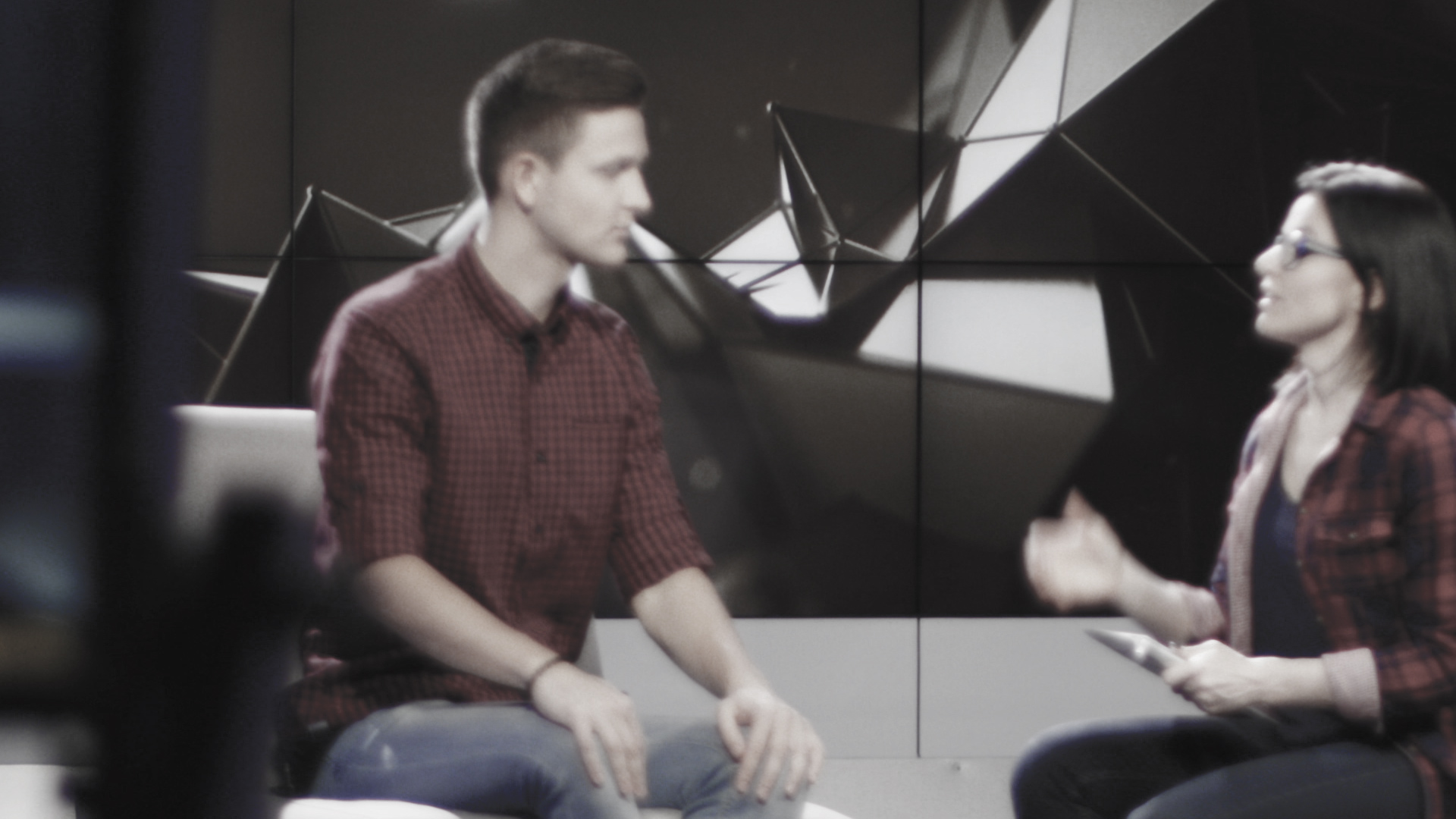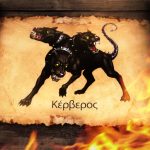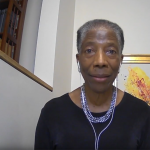Cerberus is a blog series. To start reading from the beginning, click here.
Emotions have a life and language of their own. Their physical displays are the “tells,” namely, the signals the brains of humans, dogs, cats, and other mammals emit to show how they feel. If my cat purrs, for example, my cat is feeling attended to, safe, and content. The Mother Nature Network narrates the hardwired details about cats in a July 16, 2015, post:
A cat’s purr begins in its brain. A repetitive neural oscillator sends messages to the laryngeal muscles, causing them to twitch at a rate of 25 to 150 vibrations per second. This causes the vocal cords to separate when the cat inhales and exhales, producing a purr. But not all cats can purr.
If a puppy’s tail is wagging and legs are prancing, the emotion displayed is happiness; if a dog’s jaws tighten and she growls, the emotion displayed is anger or rage; if babies feel sad, their lips turn downward; if startled, their eyes bulge and their hands and limbs flail; if enraged, their eyes narrow, eyebrows arch, and hands tighten and open like claws. All of these clues are cues, namely, body-language brain works.
Cerberus does not speak this body language. He is the language, namely, the tell, the gesture, the growl, the despairing brow, or the disgusted look that comes to the fore when hearts get broken. He is an emotion looking out for itself to ensure that it won’t get hurt again. And if the abuse can’t be stopped, the feeling heads for the underworld. Cerberus not only guards the gate, the access point to injured feelings, so they won’t be hurt again; he is that gate.
Cerberus is an emotion looking out for itself to ensure that it won’t get hurt again.
When my mother repeatedly put Grouch Bags to my lips when I was five and ordered me to inflate them so she could burst them and make my frowns go away, she eventually damned up all my sadness. The damned feelings went to hell for safe keeping so that she, who reviled emotional displays, could not sack them and destroy their expression again. Cerberus was that doggie bagged leftovers shelved in a place beyond her reach.
When my father told me anxiety is the good news story in my life, namely, a sign that I handle my anguish nobly, my anxiety became as cold as hell. Cerberus didn’t coldshoulder that feeling. He was the coldshoulder protecting my anxiety from being iced again.
Thanks to my parents’ ongoing strategies to stifle my discontent; sack my sorrow; and strangle my anger, fear, and rage, I learned how to do these things to my emotions without their assistance. Cerberus was there to make sure that I didn’t fail in this work, lest a vulnerable feeling escape from hell and get blown to bits or freeze-dried again.
This way of not handling my emotions became the signature mentality of my adult life: I avoided all emotions like hell. The hound of Hades never failed me. He was my constant companion. I called him Mr. C. We never conversed because we didn’t have to. Any emotion that came our way got zapped.
This way of not handling my emotions became the signature mentality of my adult life: I avoided all emotions like hell.
This scenario perfected by years of unfailing practice changed, however, when I was forced to start handling the emotions of others for my new television show.
Background. I completed my Master’s work at Columbia University’s Graduate School of Journalism in 1968. In 1969 I moved to Lincoln, Nebraska for a year to become co-producer, co-writer, and co-director of a four-part PBS series of docudramas on the history of black cowboys, explorers, pioneers, and cavalry (the Buffalo Soldiers) in the American West called “The Black Frontier,” which aired the following year. In 1970, I moved to Los Angeles to work for the public television (KCET), setting up a news and public affairs storefront production studio and office in South Central LA for a local weekly black magazine show I produced. Some of my shows went national. I won local, state, and international awards for my documentaries. And I won an Emmy for a one-man show, starring the African American Shakespearean actor William Marshall that I free-lance produced and wrote for KNBC in Burbank.
The local Emmy won me an invitation from KNBC to become its staff producer in 1975 and produce more local specials and documentaries about black American life. I was also expected to start a late night talk show.
KNBC needed a low-budget talk show to fill the last hour necessary to meet the local original production requirement for keeping its federal license to use the public’s airwaves. The cheapest way to meet this federal requirement, station management reasoned, would be to tape two people talking to each other for an hour. Best to hire one of the local newscasters or a weatherperson as host, so I was told, and then find local officials and community leaders as the guests. Few people would watch the show. Fewer still would talk about it. The show would air at 1 AM Saturday night. It couldn’t fail because its only rationale for existence was an escort service paid to take KNBC’s license home.
I called the show “At One With,” a pun on the time of night it aired and the mode of communication. Each week, the full title of the show would announce the guest.
My first show, I decided, should be “At One with Richard Pryor,” featuring the acerbic stand-up black comedian and actor who always complained that white people boxed him in: “I woke up in an ambulance. And it wasn’t nothing but white people staring at me. And I said, ‘Ain’t this a bitch. I done died and done wound up in the wrong muthaf%#@ing heaven.’” His views about religion were just as snarky: “The reason that people use a crucifix against vampires is that vampires are allergic to bullshit.”
The protocol for such a show, I mistakenly thought, was simple. I tracked down his agent and booked Pryor for my first show by promising to give Pryor an hour of airtime on NBC so that he could have total freedom to just be himself. And I hired Howard Hesseman, an actor and comedian, to be the host.
Everyone was excited when Pryor arrived. I had pulled off a coup by getting one of the all-time great comedians in America to launch a talk show that no one had heard of and no one was expected to watch. “Just talk about whatever you want,” I said shaking his hand. Then I took him to the makeup room, introduced him to Howard when we arrived in the studio, had them sit down in two chairs facing each other, and then went into the control room to launch the show.
The music began; the jelled starlights in the background beamed. The camera slowly zoomed in for a tight shot of Richard’s face, and all of us waited with baited breath for the master comedian to speak.
We continued to wait.
After about 30 seconds of silence, Richard began to look around him as if he were a deer caught in the headlights. Finally he spoke, saying “What am I supposed to say?” Dead silence again. “No, really,” he continued, “what am I supposed to do”? He was silent for a long moment. Then he referred to me: “The producer seems to be a nice lady, but she didn’t tell me what to do.”
We could not air the show.
The next morning I was called into the executive producer’s office for all local programming and read the riot act. “Talk shows are scripted,” I was told. “Produce the goddamn show.”
The game plan I grew up with must now change. I could no longer be the passive kid waiting to see what manufactured feeling I should display to appease my parents and, subsequently, everyone else.
A search for the new protocol for producing my talk show forced me to ask a brand-new question: Why would anyone watch two talking heads on a TV screen in the dead of night? KNBC management’s answer was obvious: few would watch the show. I now reasoned from the perspective of the viewer. Bored, lonely people would watch such a show, I concluded, namely, people who had no real-life conversation partners that mattered enough to stay up with them and talk late into the night.
The purpose of my talk show, I resolved, would be to model what it really means to be at one with another person as an experience of deep listening and caring conversation about things that really matter in their lives.
This new plan for my show forced me to look for and find a person’s real feelings, namely, their true self. The strategy required multiple steps. First, I would book celebrities who were simply known for being famous. My production assistant would then gather as much published material about the upcoming guest as possible. I would read all of it looking for a way into the heart of the guest’s personal life that revealed the emotional dignity of their soul. During the pre-interview with the guest (in person or on the phone), I would talk with the person until some overlooked emotional part of themselves that was radiant showed up as a narrative. The research material would give me hints as to where I should begin.
The first guest for this new strategy was Jane Fonda. I discovered that the prompt for the shift in her celebrity persona from Barbarella-the-Hollywood-mindless-bimbo to Jane Fonda-the-feminist-social-activist-dynamo was the trip she took to India after she became pregnant. So my pre-interview focused on what happened to her in India. She went to India to find out, as she put it, the meaning of life. The result: her experiences in ashrams transformed her life journey into a spiritual quest. I then blocked out the questions so that the show started with a question about her spiritual quest to find the meaning of life. When my host Keith Berwick—a former UCLA history professor and aspiring local television personality—asked her my first question, saying, “Tell us what happened to you in India,” Jane spontaneous threw back her head and said, with a mile-wide grin, “Oh wow! You guys really want to get into it.” We did. And she did. Afterwards, one of the cameramen said to me, “I didn’t know she was a human being.”
Within a very short time, I was booking hundreds of Hollywood celebrities and celebrity intelligentsia for my show because of the way I set it up: as a glimpse into their emotional heart.
Soon, it became an honor to receive an invitation to be a guest on my show. Within a very short period of time, I was booking Hollywood celebrities like Burt Reynolds, and celebrity intelligentsia like Norman Mailer, Christopher Isherwood, Kwame Ture, Gore Vidal, Orianna Fallaci, Lonnie Elder, the Library of Congress poet laureate Robert Hayden, and hundreds more. I could get these national and international guests for my local show because of the way I set it up: not as an intimate look at the life of a celebrity, but rather as a glimpse into the emotional heart of the person far beyond the reach of the klieg lights and noisy paparazzi din. I was now utterly fascinated by and deeply interested in how feelings get repressed, set aside, recovered—and released. I tracked them down and found them.
When I contacted Chevy Chase, then of Saturday Night Live fame, he said, “Yes,” but then added, “I didn’t think I was ready yet to be a guest on your show.” On my show, celebrities became sages with insight meditations of the human heart.
My show now unfolded as an intimate conversation between friends. I knew how to construct the questions and arrange their sequencing so that raw feelings were disclosed not as dirty laundry but as quiet revelation of a damaged emotional soul that could be healed if aired with grace. And I told the host Keith Berwick that the inner show really began when he asked the guest a question that gave the person pause. “Don’t fill in the silence,” I told him, because that is where the real conversation begins, when a revelation of the inward is given space to unfold as a work of art (Mom) or as a spiritual discipline (Dad). I had learned these lessons from my parents, and now used the lessons with one decided difference. I didn’t want to sack or freeze emotions; I wanted to find and free them.
I knew how to construct the questions and arrange their sequencing so that raw feelings were disclosed not as dirty laundry but as quiet revelation of a damaged emotional soul that could be healed if aired with grace.
I learned how to construct the inner space for such moments to happen on my television show. I mastered the art of writing scenarios that would disclose the emotions of my guests as revelations of their soul. And I did this with hundreds of guests for nine years. The only one I could not do this kind of soulful emotional excavation work with was me.
Every Saturday morning Mr. C. watched over me as I sat on my living room couch and cried without knowing why. As soon as the tiny rivulets stopped flowing, we went shopping, or to a movie, or to a favorite restaurant or bookstore, careful to step over the stream of water rather than wade through it.
One Saturday morning, however, a tear splashed on my hand and I was astonished by the sensation. It was delicate as an angel’s breath and gentle as the mist before dawn. I felt the emotion accompanying the tear, and I told myself something I didn’t know until that moment. I said: “I’m sad.” Like an oracle from Delphi, I now heard a voice say, “Turn around.” I did and saw Cerberus leaving me. His job was done.
Cerberus could no longer protect my emotions because I had just resolved to explore them rather than continue to guard against them. Mr. C. wished me luck and disappeared.
Chapter 4, Mom’s Cerberus >
This blog series and all other materials on this website have been offered to you at no cost. New chapters will be released at regular intervals. If you like this blog and find it useful, please consider making a donation to support Rev. Dr. Thandeka’s work.
Click here to donate: |










Post a comment